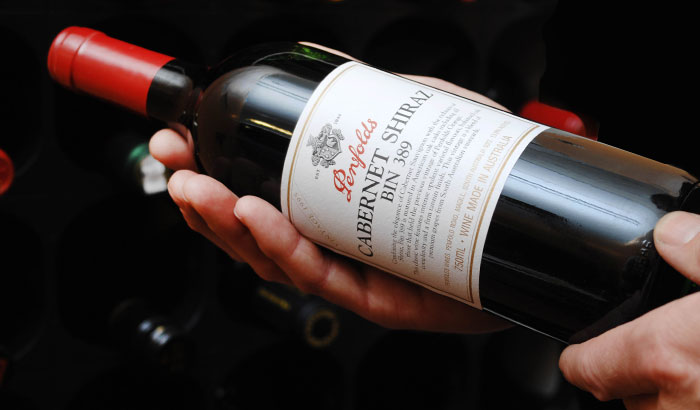Kennards Cellarpedia
We are passionate about wine cellaring and have learnt a lot in our experience.
We have created Cellarpedia to share some of this and dispel some myths.
If you have additional tips or wine cellaring wisdom we would love to hear it. Please email us at: Cellarpedia

What's in Wine
Wine making is a complex process, starting with the long wait of 5 to 7 months to grow a harvest, after this the actual process takes a few weeks to produce.
The three components of wine are grapes, water and yeast. The yeast consumes the sugars in the grapes and converts them to alcohol.
One bottle of wine contains 1.3 kilos of grapes!

Aging Wine
As a wine starts to mature, its bouquet will become more developed and multi-layered. While a taster may be able to pick out a few fruit notes in a young wine, a more complex wine will have several distinct fruit, floral, earthy, mineral and oak derived notes.
The lingering finish of a wine will lengthen. Eventually the wine will reach a point of maturity, when it is said to be at its peak.
The smell of young wine is called an "aroma" while a more mature wine offers a more subtle "bouquet."

To Age or Not to Age
Did you know not all wines are meant to be cellared for long periods of time. 90% of wine is made to drink now, while it retains its freshness.
While cellaring your wine, bottles should be kept on their side to allow for sedimentation, this also keeps the cork wet.

What is Wine Provenance?
Provenance is the authentication of wines origin and storage conditions during transport and cellaring. It is the assessment of the contents of a bottle, both in terms of quality and the risk of wine fraud. A documented history of storage conditions is valuable in estimating the quality of an older vintage due to the fragile nature of wine.
Market value for wines will only be attained where they have been professionally stored under climate-controlled conditions.

Wine Oxidisation
Wine oxidises when it is exposed to air. When wine tannins are oxidised, a chemical reaction occurs - Hydrogen Peroxide is produced which then leads to the oxidysing of Ethanol Acetaldehyde.
This process results in a distinctive sharp odour and deterioration in colour to a more brownish tint. The process reduces the tasting quality of the wine, which may only initially diminish enjoyment but often leads to spoilage and undrinkable wine.
Oxidation can occur at anytime in the wine making process and even after bottling.
The biggest factor in oxidation is the amount of wine surface area exposed to air.
Wine bottles should be layed on their sides to keep the corks moist, help prevent cork shrinkage. If the cork shrinks, small amounts of air can enter the bottle and the wine will then oxidise. Oxidation then decomposes the wine which leads to loss of desirable flavours and change in colour. However, with the advent of the screw caps replacing corks, the oxidation problem may soon be a thing of the past.
Screw Cap & cork Wine Cork

Screw Cap Wines
Screw cap bottle closures have dramatically changed wines. The inert nature of the screw cap differs from the natural, organic and inconsistent cork seal. Screw caps have been adopted in Australia and New Zealand on-masse by producers.
Cork taint and wine oxidation have been eliminated.
Initial concerns about wine cellaring being compromised have been laid to rest. Wines sealed and stored with screw caps in the 1980's are tasting beautifully in recent taste tests. It is considered, that there is enough oxygen in the headspace for suitable aging. In addition, much of the aging and settling process requires no oxygen.
Screw caps actually offer a more predictable and consistent aging process so should make wine cellaring even more rewarding.

Understanding Cork Taint
Cork taint is an unpleasant earthy, mouldy or musty smell that overwhelms the natural fruit aroma in wine, and reduces the enjoyment and appeal of the wine.
Many studies have been undertaken that have revealed that the cork, though mostly responsible for cork taint, is not the only culprit. Wooden barrels, transport of wine or cork and storage conditions have also been attributed to a small element of responsibility.
It is caused by a mould created by the treatment of wood products.
A chemical compound commonly referred to as TCA (2,4,6 - Trichloroanisole) is considered to be the primary cause of cork taint.
Cork taint is the biggest peril bottled wine drinkers encounter. It is random, and no wine is immune regardless of its price or producer.
The cork and wine industry are tireless in their application to minimise cork taint, and pursue methods to see it eliminated.
Serving Wine Temperature

Wine Flaws and Wine Faults
In wine tasting, there is a distinction made between what is considered a flaw and a fault. Wine flaws are minor attributes that depart from what is perceived as a normal wine characteristics. These include excessivesulfur dioxide, volatile acidity, Brettanomyces or "Brett aromas" anddiacetyl or buttery aromas. The amount to which these aromas or attributes become excessive is dependent on the particular tastes andrecognition thresholdof the wine taster. Generally, a wine exhibiting these qualities is still considered drinkable by the large masses.However, some flaws such as volatile acidity and Brettanomyces can be considered a fault when they are in such an excess that they overwhelm other components of the wine. Wine faults are generally major attributes that make a wine undrinkable to most wine tasters. Examples of wine faults include acetaldehyde (except when purposely induced in wines like Sherry and Rancio), ethyl acetate and cork taint.
Source: Wikipedia



